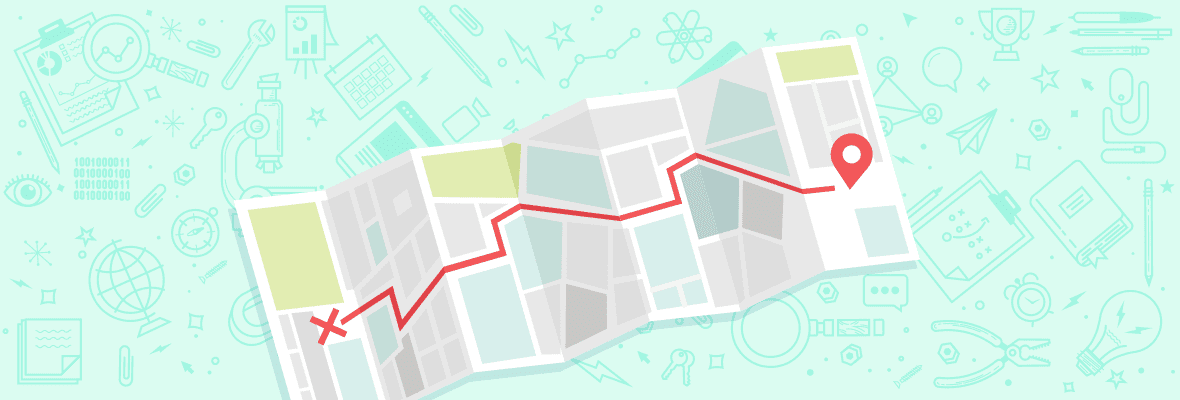
Boost your rankings and attract more customers through our SEO expertise.

In the first blog post of this three-part series, I identified why together, mobile and Google will dominate the near-future of all online search for a physical business. If you think about Google search’s current data set and mobile reach, combined with their algorithms, processes, historical knowledge and machine-based learning, they’re destined to determine a larger share of brands’ new customers vs. any other platform, company or medium.
Blog post one also dissected the anatomy of a Google SERP, and defined “local SEO” as the attempt of physical businesses to rank at the top of organic or maps search results, when a consumer looks for a business, product or service online, and the query is seen by the search engine as having local intent. Remember, Google searches, deemed to have local intent, have increased 34 times since 2011 and more than doubled since 2014, following the growth of smartphone users and usage.
Blog post two examined the basic elements to winning at local SEO for Fortune 1000 businesses with physical locations, agents or franchises. I discussed why, for reasons unlikely to change, “chains” are at a disadvantage compared to small businesses in Google local (otherwise known as Maps and/or 3-pack) results.
Part three will look at local SEO tactics for 2017 that can substantially elevate the rank of multi-location businesses in Google local results, dramatically increase customer acquisition efforts, and position the business to capitalise on three emerging trends:
The key takeaway from these trends is that marketers shouldn’t fight Google, or wait for the dust to settle before embracing the future of digital marketing and enacting organisational change. Instead of having line items in the budget and ROI tracking for each type of digital marketing individually (e.g. paid media, SEO, content marketing, social media), smart brands will invest in channels more equally and structure their departments and processes with a more holistic strategy in mind. This will, in turn, bring local marketing strategies more to the forefront of all large organisations with local extensions.
For example, in the future, digital strategies or investments that aren’t seen as an “e-commerce play”, will still lead some consumers to be an active online customer, and will be credited appropriately. Or to cite a different example, brand advertising in the form of pre-roll, sponsorships or even OOH, will start to include effective local extensions or direct calls to action that convert more easily than ever before. Forward-thinking B2C brands will flourish, while enterprise leadership employing traditional marketing best-practices will falter.
So what are the local SEO 2.0 tactics for enterprise brands that will move the needle after a strong foundation has been laid? Four potent strategies are described below, that depending on the industry, will be crucial to implement in 2017, once a brands’ location data is organised, and their whole organisation, down to the local level, is willing to buy in.
Local link building
This tactic is not something that can be fully automated, but the idea here is to reach out to organisations, companies and websites that focus on your location and/or industry, then correctly engage them so that they link to your website in a relevant location on their site. While I can’t stress enough times over the success our agency has found by executing this for our clients, I can stress and link to the best article I have found, with a detailed blueprint for how it’s done effectively.
Some examples of the strategies the author discusses include:
And remember, there’s no need to be overly focused on whether these links are follow or no-follow, as a mix of both that your site gains organically over a period of time is seen as current best practices for SEO compliance and success.
“Products and Services” local landing pages, at scale, integrated with paid search, social and display advertising
In part two of this series, I discussed the importance of local store pages or location pages for every physical store, franchise and/or agent (depending on your industry). Think of this new strategy as taking that one step further, with the intention of boosting on-page conversion rates and local SEO rankings in organic results for long-tail searches (e.g. when an auto repair shop’s landing page shows up in page 1 of SERPs when a consumer searches “muffler for Toyota cars in Phoenix, Arizona”).
Subscribe to our monthly newsletter.
Conversions from organic traffic increase naturally when launching and indexing these pages because you’re able to provide content that matches the specific demand of the searcher. But these pages will also convert higher from paid traffic when you integrate these pages with a local paid campaign, because you can target certain unbranded keywords or relevant demos in a specific market, and appear in front of the correct user, at the correct time, that will benefit most from the content on the landing page. So whether the campaign you set-up is happening through paid search, social, display, or all three at once, the user is reaching your website page that is likely to have the most value to what they are interested in.
The key when building these pages out at scale is to utilise technology that can create unique, custom content, involving each geo that provides key technical aspects for the search engines and key relevant content for the consumer, optimised around that category, product or service. While the definition of omnichannel is still evolving, this is one tent pole, when you’re able to connect, measure, personalise and implement campaigns that cross the spheres of webpage development, SEO, paid media and even online to offline synergy. Nordstrom has had success with this, deploying landing pages that encourage purchasing online from the inventory of a nearby location and picking up later from the store.
Local PR and earned media strategies
The execution of this strategy is similar to local link building, where you’ll need manpower and not technology to accomplish it effectively. For a quick overview of this tactic, let’s refer back to my last blog article, where I discussed the importance of being on “Best of” or “Top 10” lists for your industry and location, written by a local blogger or journalist (or moreover, the importance of any earned press about the product, services and “do-good” that a business provides the community in which it resides).
While some local press or “Best of” lists might only want to focus on small businesses, marketers of large brands are often providing the local community with an exceptional product, service and/or public good that they should be proud of and boast about! So even if you’re not in an industry like speciality retail, health care, or financial services, where your brand might still attract the attention of the press for being unique, QSRs, gas stations or grocery stores (as examples) can still find ways to get written up if they try. And when this happens, you’ll receive the benefit of back-links and additional positive mentions, as well as exposure in organic results.
Google certified photographs of each location, as an extension of GoogleStreetView
Some marketers might know this, but many others are missing on a new opportunity connected to photos and GoogleMyBusiness accounts. Google now has a specific set of certified photographers across the country, who can not only be scheduled to take pictures of the front door and inside of your brick and mortar location, but they can upload them to your GoogleMyBusiness profile, with special functionality enabled, to stitch those pictures together into a 360-degree view of the inside of your business!
The photos/technology integrates seamlessly with GoogleStreetView, so that consumers can digitally walk off of the GoogleStreetView and enter in and around your store. The benefit of this is not only from a user perspective, but many experts believe it helps your local rankings too.

If you’re a single location business, this is something you can easily schedule and organise as a marketer or business owner, but it can be a huge undertaking for a business with thousands of locations. If that’s the case, agencies like DAC can help efficiently and affordably execute this for enterprise brands with many locations.
Benn Kireker is the Director of Business Development of DAC’s New York Office. He specialises in business listing management solutions and local SEO and is an active contributor to our blog. Follow us on LinkedIn for more articles just like this!
Subscribe to our monthly newsletter.